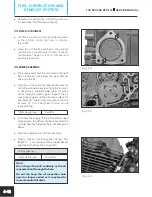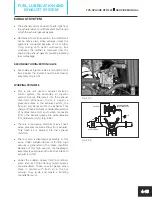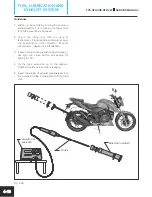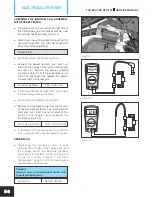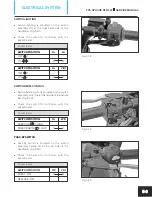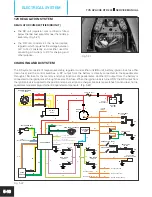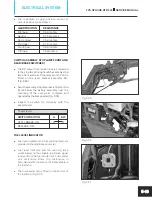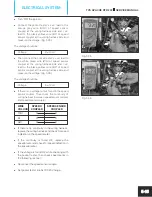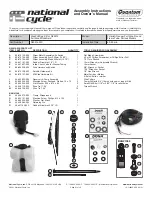
Fig. 5.1
Fig. 5.3
Fig. 5.4
CAUTION
CONNECTOR
l
When connecting a connector, be sure to push
it in until a click sound is felt. (Fig. 5.1)
l
I n s p e c t c o n n e c t o r f o r c o r r o s i o n ,
contamination and breakage on its cover.
COUPLER
l
With a lock type coupler, be sure to release the
lock before disconnecting it and push it in fully
till it gets lock with click feel. (Fig 5.2A)
l
When disconnecting a coupler, be sure to hold
the coupler itself and do not pull the lead wires.
l
Inspect each terminal on the coupler for being
loose or bent. Inspect each terminal for
corrosion and contamination.
l
Water proof couplers are provided at the
important connections. (Fig. 5.2B) Ensure the
presence of water proof seals in the couplers
before reconnecting them.
FUSE
l
When a fuse blows, always investigate the
cause, correct it and then replace the fuse.
(Fig 5.3)
l
Do not use a fuse of a different capacity. Do not
use wire or any other substitute for the fuse or
it may cause melting / burning of wires.
SEMICONDUCTOR EQUIPPED PART
l
Be careful not to drop the parts with a
semiconductor built in such as TCI unit,
regulator cum rectifier and others. (Fig. 5.4)
l
When inspecting these parts, follow the
inspection instruction strictly. Neglecting
proper procedure may cause damage to these
parts.
TVS APACHE RTR 200
SERVICE MANUAL
ELECTRICAL SYSTEM
5-2
CLICK
Fig. 5.2A
Fig. 5.2B
CLICK
Press to
release
Water proof
seal
Good Fuse
Blown Fuse



